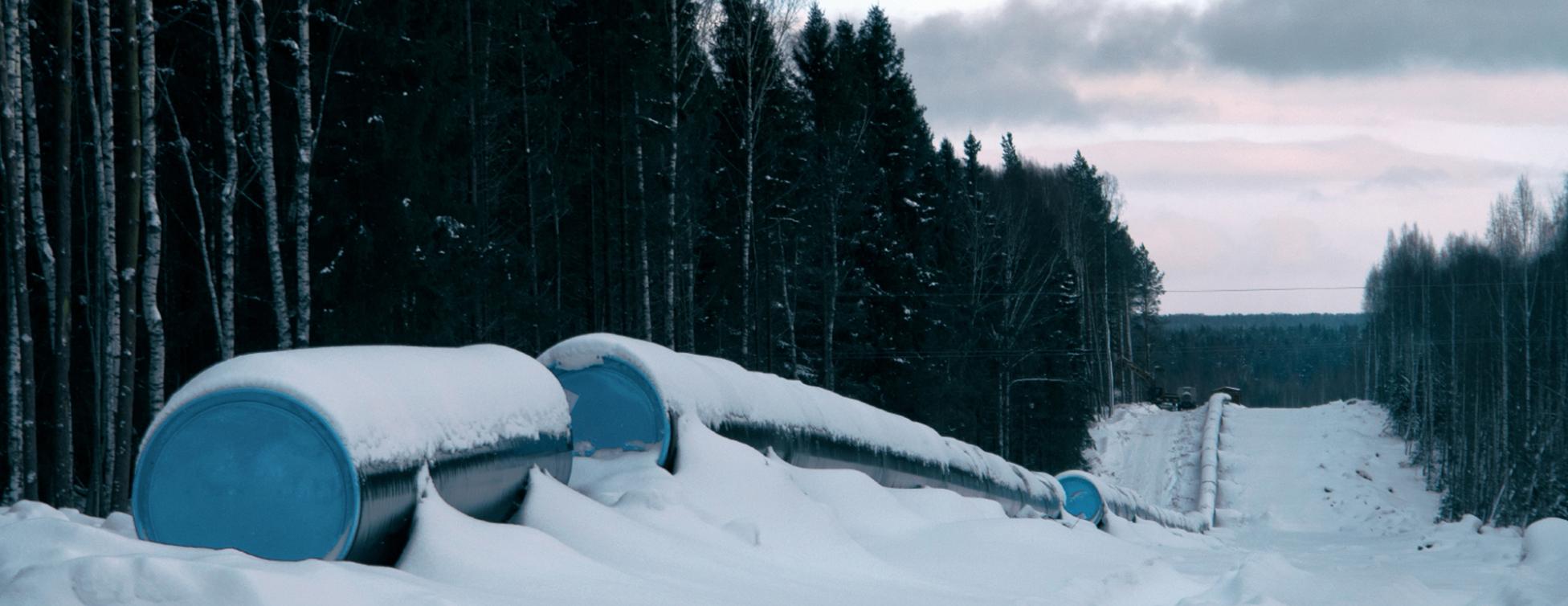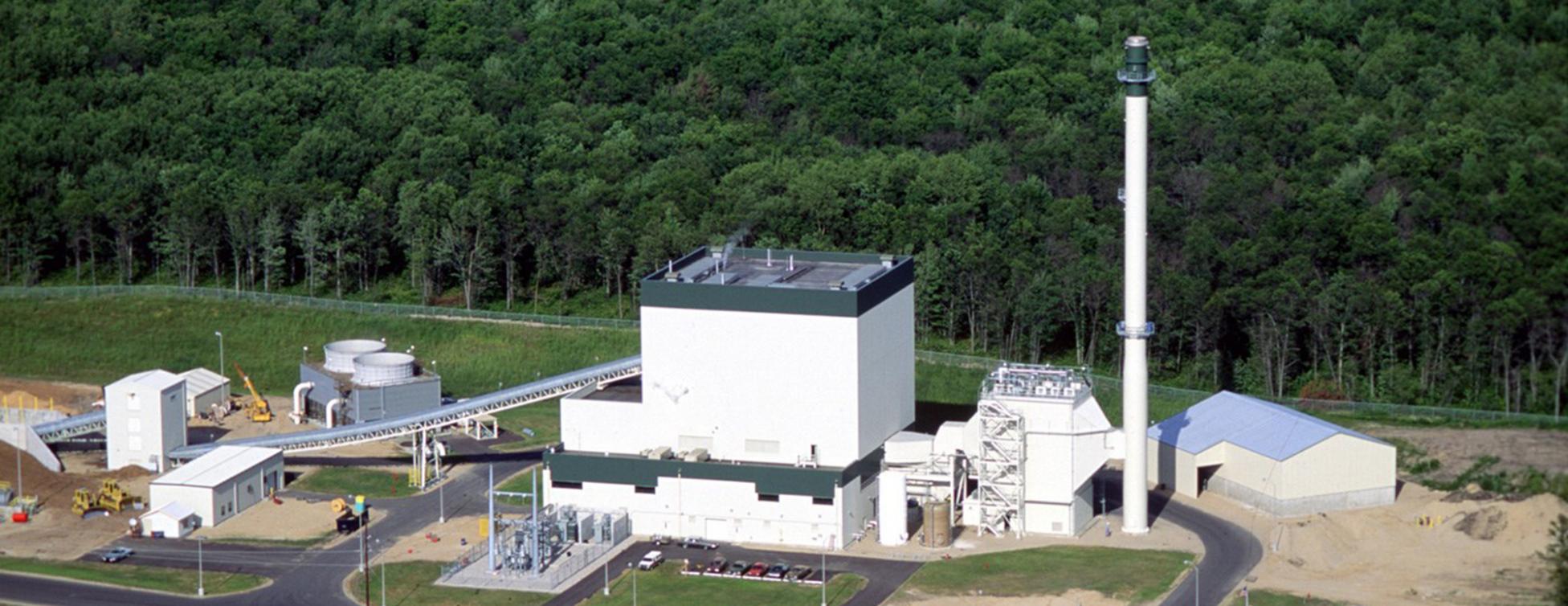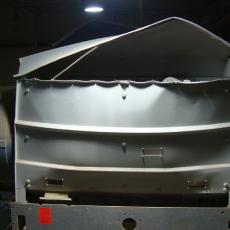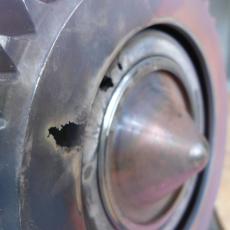Commissioning
Generator Circuit Breaker (Explosion)
The more interesting findings during our assessments are related to poor commissioning practices. These items tend to be more complex than construction defects and typically more serious from a safety, equipment protection, and reliability perspective of the asset.
One case involved an "explosion" of a generator circuit breaker. The event took place about one year after COD, destroyed the GCB and damaged an F-class turbine generator (both stator and rotor).
The Event: During a unit start the operator was at the elevated GCB panel. The generator field breaker was closed, so the generator exciter was energized. The operator inadvertently pushed the earthing switch button which activated. The earthing switches are NOT designed to be activated when the generator/exciter is energized. The switch exploded (vaporized) with the GCB housing being damaged and opened like a tin can. The operator was shielded from bolts and other shrapnel, but luckily did not fall from the platform.
Background: The GCB vendor provided a set of dry contacts on each earthing... Read more
Possibly only a time savings, but doubtful.
Unit was out of service for 6 months. New breaker, rewound stator and rotor, recommissioning of unit... All-in costs between contractor, owner, an insurance company was about $8mm.
Dirt... and Fuel Gas
As background, one critical system in a power plant is fuel gas. Typically, every system is cleaned to a condition that is nearly spotless. This is especially true of fuel gas because it feeds the turbines and duct burners. EPR evaluated a plant that was physically very large. The fuel gas header was 1.5+ miles long, inside the plant downstream of the supplier custody-filters. The system changed elevations, had countless fittings, and pipe size changes. Clearly, this is a difficult system configuration to clean well for an inexperienced crew.
Prior to EPR being involved, roughly 50 warranty claims were raised against the EPC contractor that enumerated roughly 300+ failures of valves, flame scanners, regulators, and really anything in the system with a seat or rubber O-ring. The EPC contractor refused to address the issue on-the-whole with a proper RCA (root-cause analysis), instead dealing with each item as if unrelated.
The attached photographs tell the story. This system is so full of dirt and contamination that it's not defensible to indicate proper, or perhaps any, commissioning... Read more
No Savings. Contractor went through "motions" of cleaning system, just didn't!
Just in terms of Owner down-time for needless repairs this is millions of $'s. Parts, labor, etc...
Tickle Me Raw
A new greenfield plant was reviewed by EPR, 12 months post COD. The problems related to improper commissioning were extensive and will shorten the life cycle of all the major equipment, some of which was already apparent this early in operation.
One problem that seemed to vex the O&M staff was continual failures of some safety valves.
What was eventually discovered by EPR with the aid of a borescope was debris in the piping that upon disassembly would fall far enough back inside to be difficult to see. During operation, this debris would rub against the safety valve disks and erode a hole.
The objective of commissioning piping systems is to be certain, with verification, that no debris, mill-scale, or other contamination remains that can damage components. In this instance, the foreign matter was wire that was not flushed or blown out during cleaning.
The records created by commissioning for this system indicated all the proper steps and procedures were followed and verified. However, the reality was clearly different, and it was easy to conclude with certainty this... Read more
No cost, but perhaps a day or two of schedule.
Unknown. Replacement disks will need to be stocked and replaced until the systems can be cleaned up.
Pumping Rocks
At a plant in the Middle East, the EPC contractor failed to appreciate the difficulty and consequences of not properly cleaning the LP Steam distribution system and Condensate system during commissioning.
The plant was a very large combined-cycle plant with back-pressure steam turbines that fed a 72" header. That LP header in-turn fed a billion dollars in desalination equipment. This steam network was huge. Also given it's size, it would have been difficult in certain locations to get a sufficient steam velocity to remove scale and debris. It is doubtful, given the evidence of fouling in the system, that anyone tried very hard to achieve a degree of cleanliness.
One snapshot of the damage in the system is the return condensate pump impeller indications. These impellers are supposed to have a straight (square) leading edge. Keeping in mind, these pumps were only a year old, this is not normal wear. Also, condensate is supposed to be very clean with no debris...
A borescope was used to inspect the impellers in situ during a strainer cleaning. Debris in the strainers is evident... Read more
Maybe some schedule time.
Impeller replacement. Probably $250k +/- depending on number of times. 54 units.











